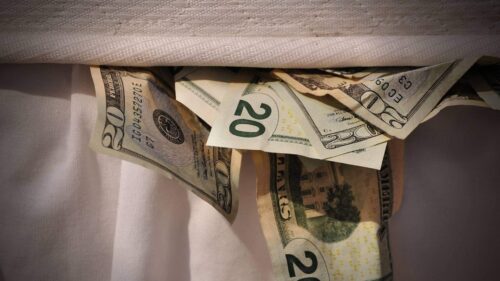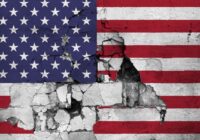What if we could have banking without the rich? What do the rich possess that the non-rich don’t? Money! Lots of it, of course. And they sell it to us in the form of debt.
We pay the rich interest on that debt — paying money for money. Most of us pay well over half of our paycheck to private banks for rent, mortgages, car loans, student loans, credit card payments and more. Wouldn’t it be nice if we didn’t need to borrow from the rich to get a loan for a new car or house or to start a business?
Turns out we don’t have to! The answer is public banking, and it’s already been working for more than a century — in North Dakota, of all places!
The Bank of North Dakota serves its state
Back in 1919, a populist political organization called the Nonpartisan League won a majority in the state legislature — don’t ever say you can’t change anything by voting! It created the Bank of North Dakota (BND), the only state-owned bank in the country. The BND’s job, according to its charter, is “encouraging and promoting agriculture, commerce, and industry” in the public interest.
The goal from the outset was to free the state’s farmers from becoming debt-dependent on the big private banks in the Twin Cities, Chicago and New York City. Since World War II, the BND has been turning profits over to North Dakota’s general fund, frequently saving the state from budget shortfalls. In 2011, for example, the bank contributed $70 million to the state budget.
Ownership is the key difference that sets the Bank of North Dakota apart from other banks. The traditional private banking model is set up to enrich its owners: the shareholders. By contrast, public banks are owned by the public — the people who live in the state or community that bank exists to serve.
And the people are well-served by the BND. That’s why North Dakota, one of the reddest of red states, continues to operate what amounts to a socialist enterprise. Even though other banks and Republicans might loathe its existence, the BND is far too popular and helpful to kill off.
That’s because the BND exists to serve the public, not to extract profits for the rich. The bank’s charter requires it. As an article from Salon describes, “Through its Partnership in Assisting Community Expansion, for example, it provides loans at below-market interest rates to businesses if and only if those businesses create at least one job for every $100,000 loaned.” The 49 states that don’t have a public bank are sitting ducks for Wall Street banks to extract profits, privately financing public infrastructure and loans for important projects like new schools. Expensive bonds can mean repayments up to ten times the value of the original loan. These schemes also mean enormous fees and unnecessary risk because bankers are trying to make as much profit as possible.
The BND is more stable than even the biggest private banks. Back during the 2008 financial crisis, The Wall Street Journal wrote, “It is more profitable than Goldman Sachs Group Inc., has a better credit rating than J.P. Morgan Chase & Co. and hasn’t seen profit growth drop since 2003.”
That’s right, it’s also super profitable! The BND posted record profits in 2023. It holds more than $10 billion in assets and has a $5.8 billion lending portfolio.
The bank also exists as a counterexample to bankers’ claims that they must offer outrageous salaries to retain talent. The BND’s executives are state employees making less than $400k a year. That’s a far cry from investment bankers on Wall Street. All of the BND’s costs are lower than private banks. Another article notes, “no bonuses, fees, or commissions; only branch office; very low borrowing costs; and no FDIC premiums.”
Private banks fear public banks
This all sounds amazing, right? So why don’t we already have public banks in every state and large city in the country? Private bankers will cite startup costs, government inefficiency, conflicts of interest or lack of expertise. As one industry spokesperson told Vox, “Our position hasn’t been secret… We’re opposed to the concept in general.”
That’s putting it mildly. The truth is, private banks are scared to death of the competition. As writer Ellen Brown said, “the public banking model is simply more profitable and efficient than the private model. Profits, rather than being siphoned into offshore tax havens, are recycled back into the bank, the state and the community.”
Public banks could easily push private banks right out of business. Fortunately, back in 1920, the BND has already survived a constitutional challenge that went all the way to the Supreme Court.
Do you remember how during the 2008 financial crisis we started hearing about private banks that were “too big to fail?” Bankers and our own government kept telling us that some banks were so big that if we let them fail, they could take the entire American economy down with them. That’s why I think too big to fail is too big to exist.
Let’s change our banking
Here’s an idea! How about the next time a too-big-to-fail bank starts to go under, the government does something different? Instead of forcing a sweetheart sale to a competitor, it could seize that bank’s assets and use them to establish public banks? I bet it would have huge positive public benefits.
Once we have lots of public banks, excessive profits could be handed out to the public in the form of dividend checks, like Alaska does with its oil fund nest-egg. In 2023, every Alaskan got a check for $1,300. Can you imagine if your state sent you a check because its public bank made too much money last year? It’s not impossible to imagine.
We don’t need the rich to have banking. In fact, the Bank of North Dakota proves that so much of what we accept about private banks is unnecessary: systemic risk, excessive fees for things like overdrafts, exorbitant charges for loans and bonds and massive profit extraction. We don’t need to accept any of those things. There is a living, breathing alternative right here in the United States. We should take our inspiration and run with it.
Let’s make them pay.
[Let’s Make Them Pay first published this piece.]
[Lee Thompson-Kolar edited this piece.]
The views expressed in this article are the author’s own and do not necessarily reflect Fair Observer’s editorial policy.
Support Fair Observer
We rely on your support for our independence, diversity and quality.
For more than 10 years, Fair Observer has been free, fair and independent. No billionaire owns us, no advertisers control us. We are a reader-supported nonprofit. Unlike many other publications, we keep our content free for readers regardless of where they live or whether they can afford to pay. We have no paywalls and no ads.
In the post-truth era of fake news, echo chambers and filter bubbles, we publish a plurality of perspectives from around the world. Anyone can publish with us, but everyone goes through a rigorous editorial process. So, you get fact-checked, well-reasoned content instead of noise.
We publish 2,500+ voices from 90+ countries. We also conduct education and training programs
on subjects ranging from digital media and journalism to writing and critical thinking. This
doesn’t come cheap. Servers, editors, trainers and web developers cost
money.
Please consider supporting us on a regular basis as a recurring donor or a
sustaining member.
Will you support FO’s journalism?
We rely on your support for our independence, diversity and quality.










Comment
I can only assume that the author of this piece has never heard of credit unions, which already solve all of these problems, and are available basically to anyone in the US and many other countries